|
An Inventory of Marx Playset Figures and Accessories Manufactured from 1951 to 1979
Appendix R-3 - Trucking Terminal
|
Contents of this web site may not be reproduced or duplicated for use on the Internet or for commercial purposes without permission by Eric Johns.
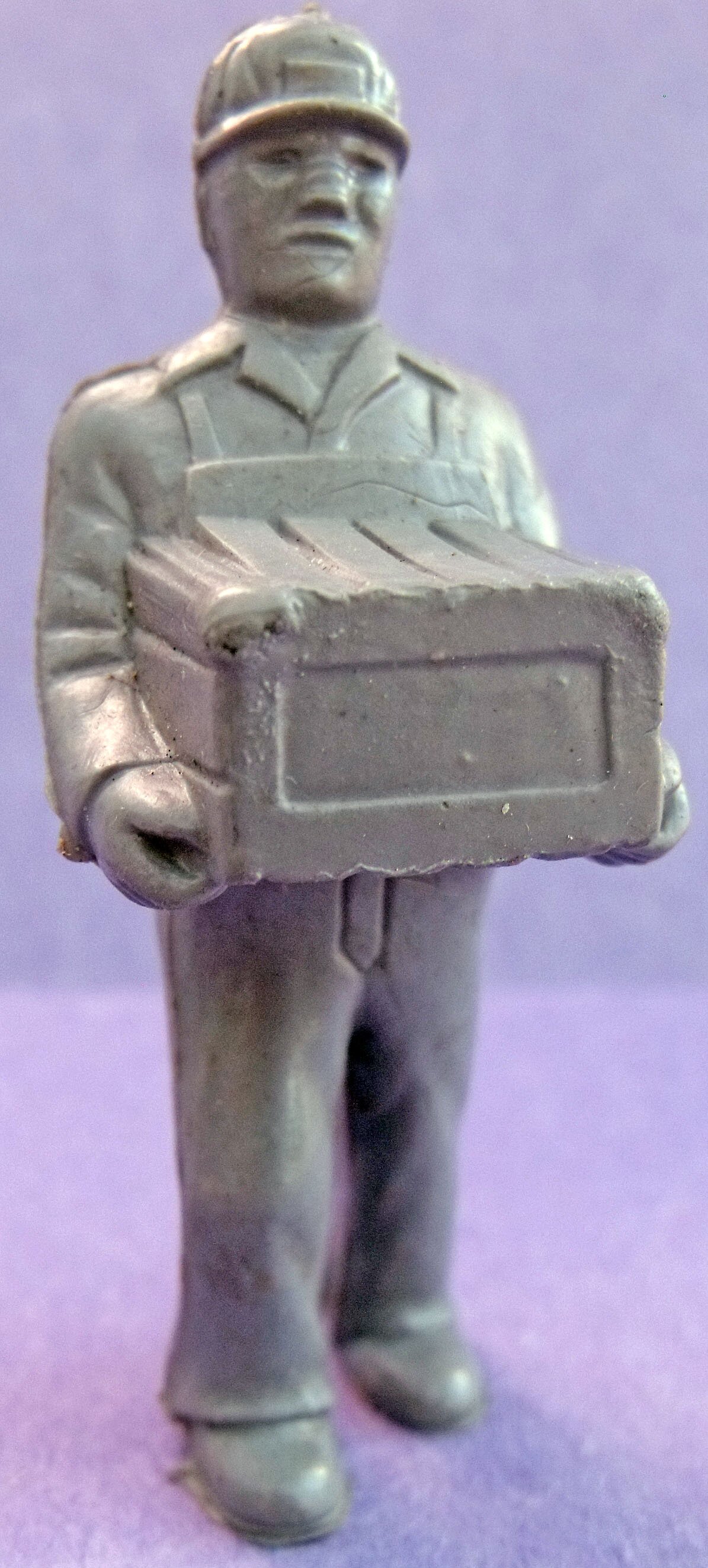 Table of Contents Table of ContentsTrucking Terminal |
| Terminal Building |
| Figures |
| Accessories |
| Vehicles |
| Back to Main Table of Contents |
According to an article in Plastic Playset and Figure Collectors (PFPC) magazine, Issue 39, Marx originally made the Trucking Terminal set with its line of toy trains in mind. First sold in 1950, the set's terminal platform is 1-1/4 inches high, just right to load or unload train boxcars in O gauge train sets. The set's large box does not state "playset", and in some cases the terminal was sold with a train set. It's also notable that many of the small accessories seem to be more related to passenger luggage than to freight hauled by trucks.
The PFPC article is based largely on two versions of the set sold in 1953 and 1954, but lists 16 versions produced from 1950 to 1962. Most information on this page is drawn from that article.
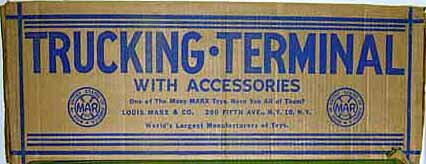 |
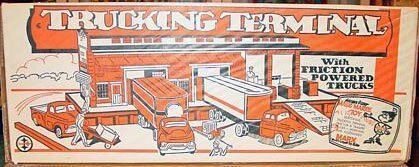 |
Terminal Building
The focal point of this playset, naturally, is the large terminal building. As in most Marx playsets, the structure is made is brightly lithograhed, pressed tin. It is lithographed both inside and outside. Based on the building I own, the entire structure is approximately 29 inches long, 11 inches wide, and 8-1/2 inches tall. This is larger than the measurements stated in the PFPC article, which I quoted here in the past. It it the largest Marx tin litho playset structure that I have seen.
There are three ramps that lead up to the terminal platform. The two largest are a 3-by-6-inch "brick" ramp (also made of tin litho, shown below) that Marx designated as a "vehicle ramp." For pedestrians, there is a small hard plastic stairway, which is hard to find today. The third and smallest ramp is a tin piece that attaches to a slot in the platform and is desigated as a "barrel ramp." The barrel ramp -- which seems to be so small that I imagine most are long lost -- is known to come in red or yellow, and is very hard to find now. The steps. which can be found in several colors, also fit into slots on the platform, while the 6-inch ramp can be placed anywhere along the platform.
The terminal had a green roof initially, as shown below. When Marx updated the set in 1954, it changed the roof to maroon and the side walls from light orange to a gray brick. This new version is not often found today. I am unsure whether Marx stopped making the green-roof terminals when they introduced the maroon-roof versions or continued to make both.
The focal point of this playset, naturally, is the large terminal building. As in most Marx playsets, the structure is made is brightly lithograhed, pressed tin. It is lithographed both inside and outside. Based on the building I own, the entire structure is approximately 29 inches long, 11 inches wide, and 8-1/2 inches tall. This is larger than the measurements stated in the PFPC article, which I quoted here in the past. It it the largest Marx tin litho playset structure that I have seen.
There are three ramps that lead up to the terminal platform. The two largest are a 3-by-6-inch "brick" ramp (also made of tin litho, shown below) that Marx designated as a "vehicle ramp." For pedestrians, there is a small hard plastic stairway, which is hard to find today. The third and smallest ramp is a tin piece that attaches to a slot in the platform and is desigated as a "barrel ramp." The barrel ramp -- which seems to be so small that I imagine most are long lost -- is known to come in red or yellow, and is very hard to find now. The steps. which can be found in several colors, also fit into slots on the platform, while the 6-inch ramp can be placed anywhere along the platform.
The terminal had a green roof initially, as shown below. When Marx updated the set in 1954, it changed the roof to maroon and the side walls from light orange to a gray brick. This new version is not often found today. I am unsure whether Marx stopped making the green-roof terminals when they introduced the maroon-roof versions or continued to make both.
 |
 |
| Freight terminal | Freight terminal from other side with ramp |
 |
 |
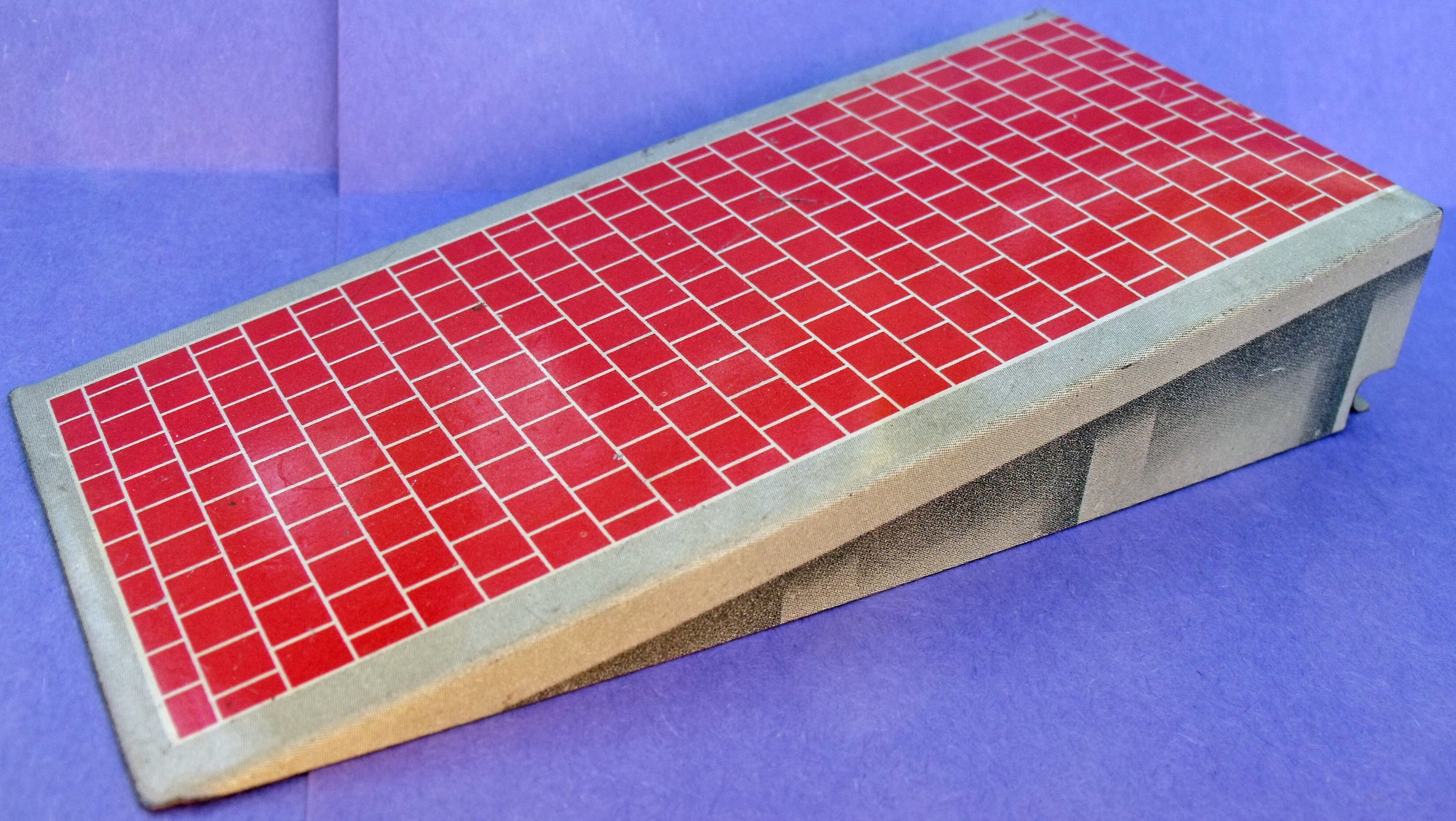 |
| Claims Office and cashier window inside terminal | Close-up of inbound door Cashier window is inside on the left |
Vehicle ramp |

Figures
Most early sets came with a group of five terminal workers; the tallest ones are 58mm, about 2-3/8 inces. These were made in rubber-like vinyl in colors such as cream, gray, off-white, blue, and yellow. I am unsure whether these figures later came in soft plastic and in other colors. They were initally produced with no base, but Marx added bases to the four standing figure in late 1953. The figures are crudely sculpted, very similar to the "chubby" cowboy figures in the company's Western Ranch playsets of the early 1950s.
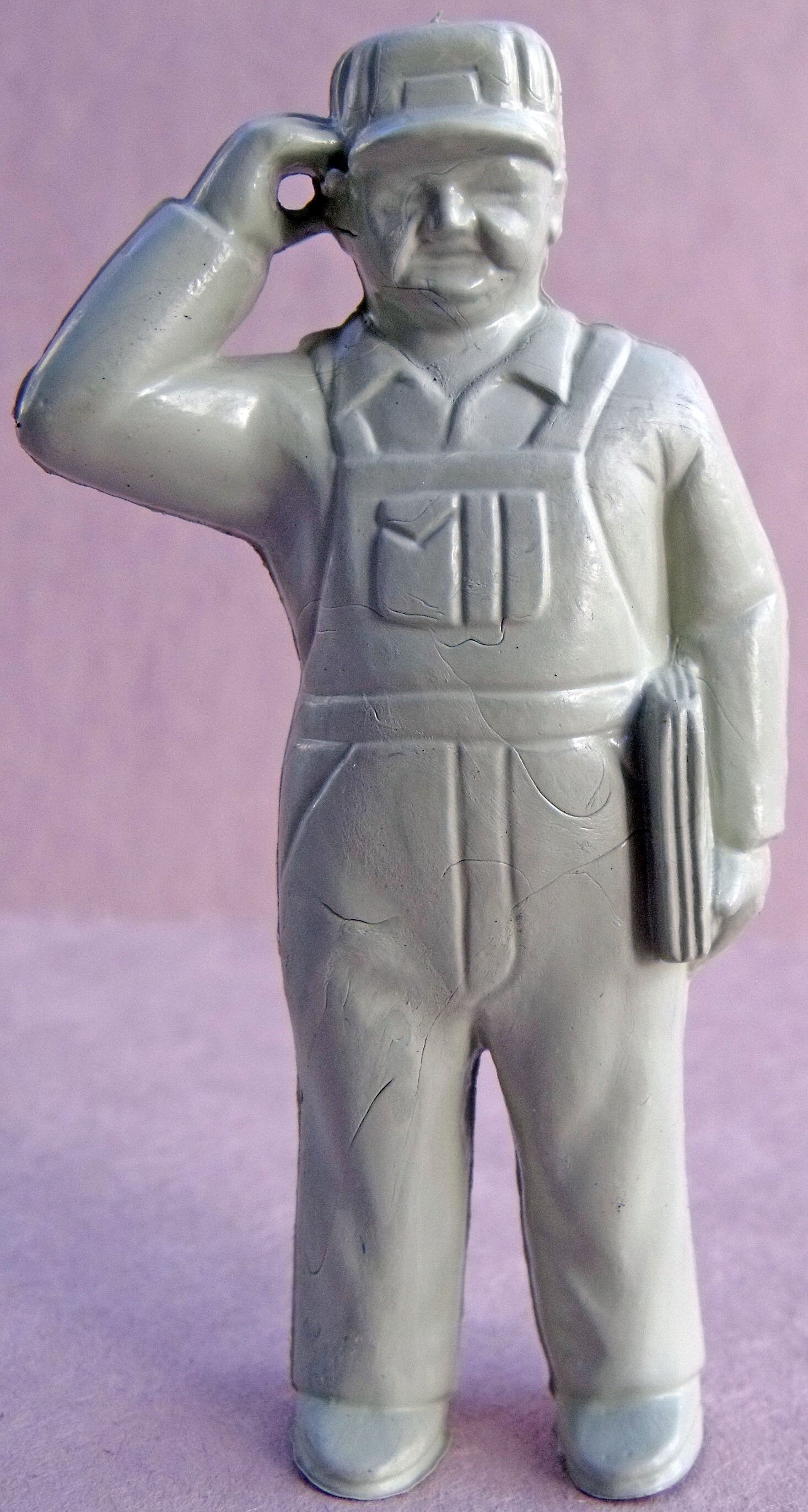 |
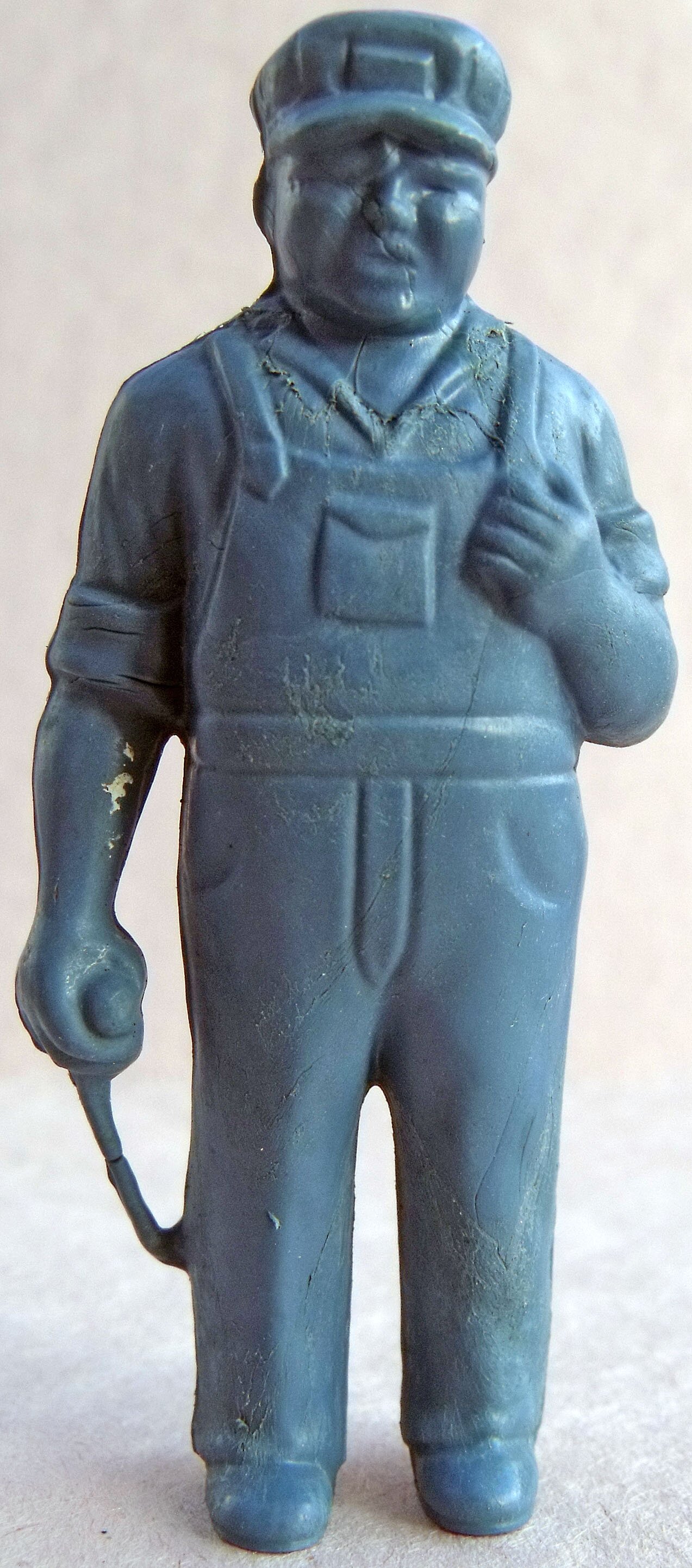 |
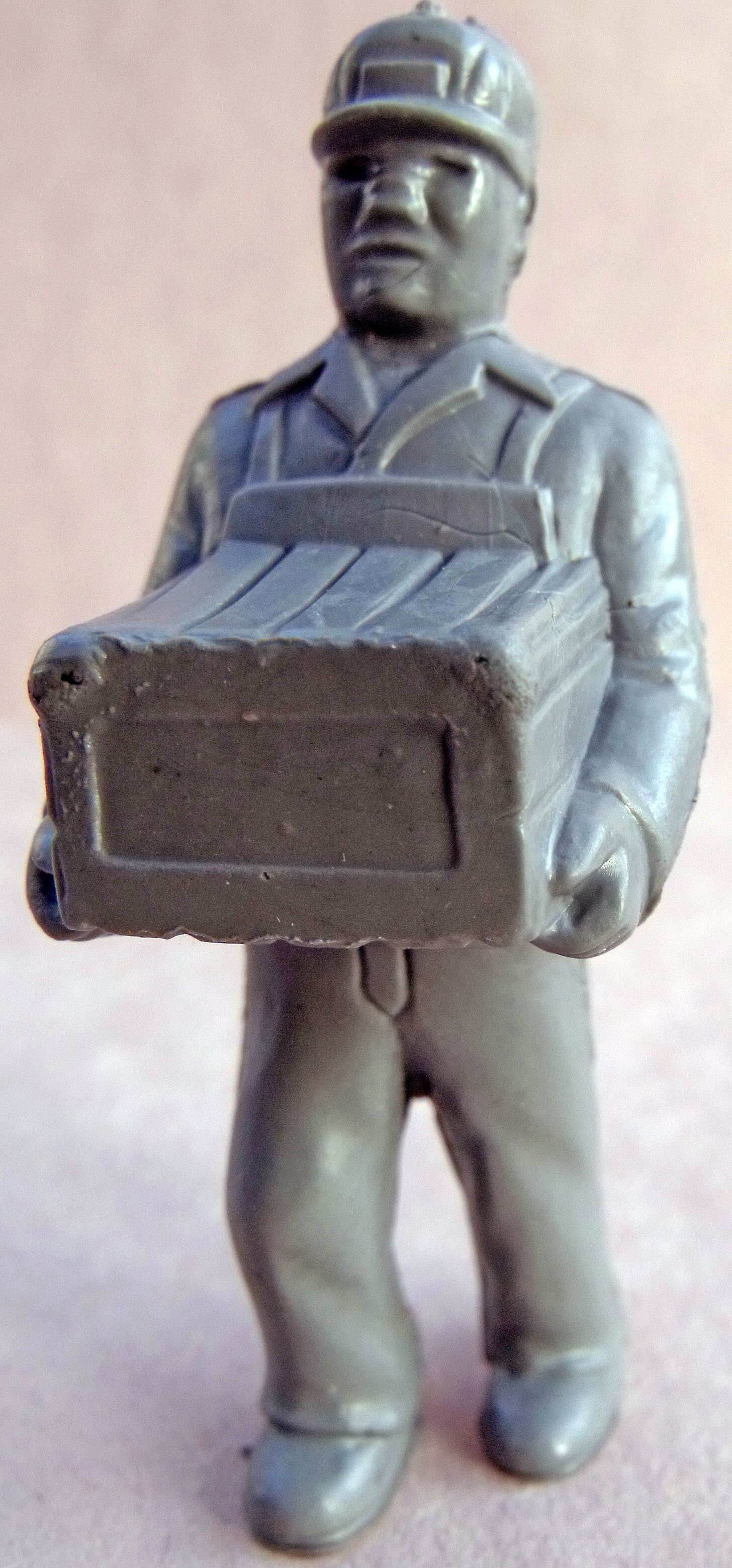 |
| 1. Standing with papers | 2. Standing with crow bar | 3. Carrying box |
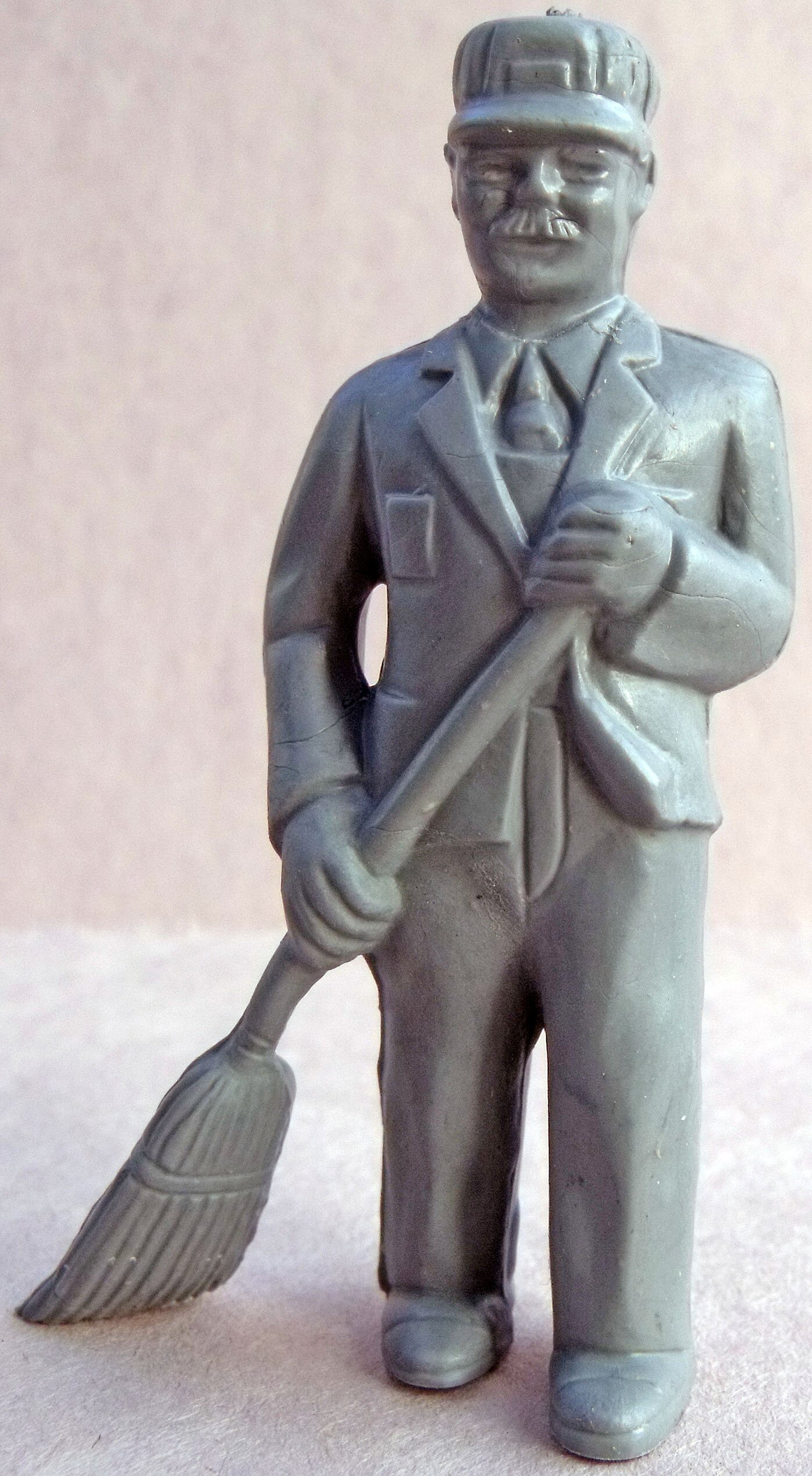 |
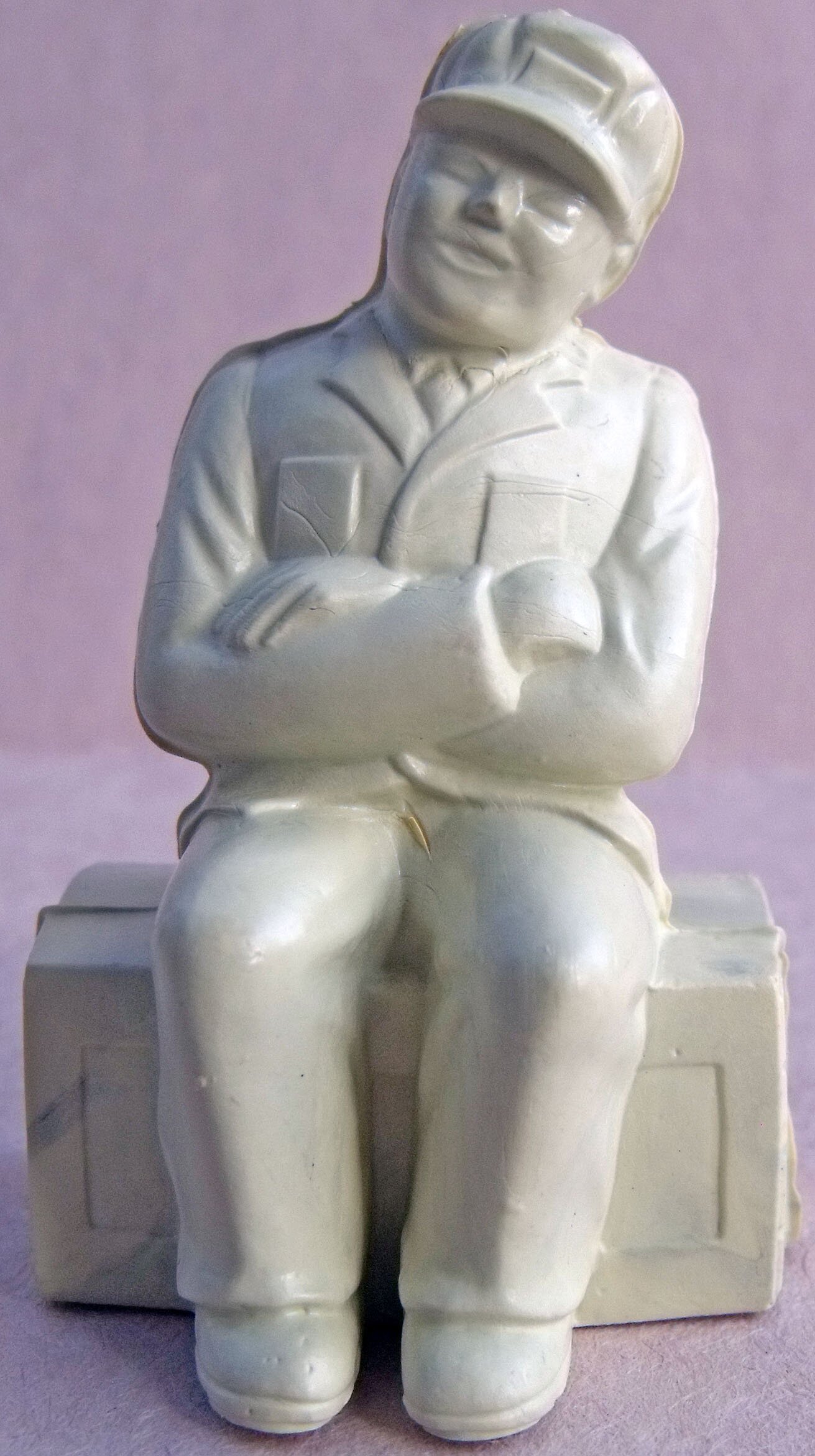 |
|
| 4. Sweeping | 5. Sitting on box |
In 1953, Marx introduced a new group of six 3-1/4-inch figures to the Truck Terminal sets. Made in a cream-colored soft plastic, these were much more detailed and attractive figures. Again, I am unsure if they were used in all later sets.
| 1. Notebook in left hand | 2. Right arm raised to carry box | 3. Arms down to push hard cart |
| 4. Sleeves rolled up, with tool | 5. Right arm held forward | 6. Holding water hose and rag |

Accessories
Despite the large terminal building, I think the fun part of this set starts when you get to the numerous and sometimes unusual accessories. These include 12 hard plastic items, six pieces of platform equipment and six pieces of baggage or freight. The equipment came in several colors, including greens, yellows, blues, red, gray, and black. Wheels for the equipment -- actually one-piece axle/wheels combinations -- came in at least two colors, yellow and black. Wheels were either 1/2-inch or 3/4 inch in diameter, with the three baggage trucks using the larger ones.
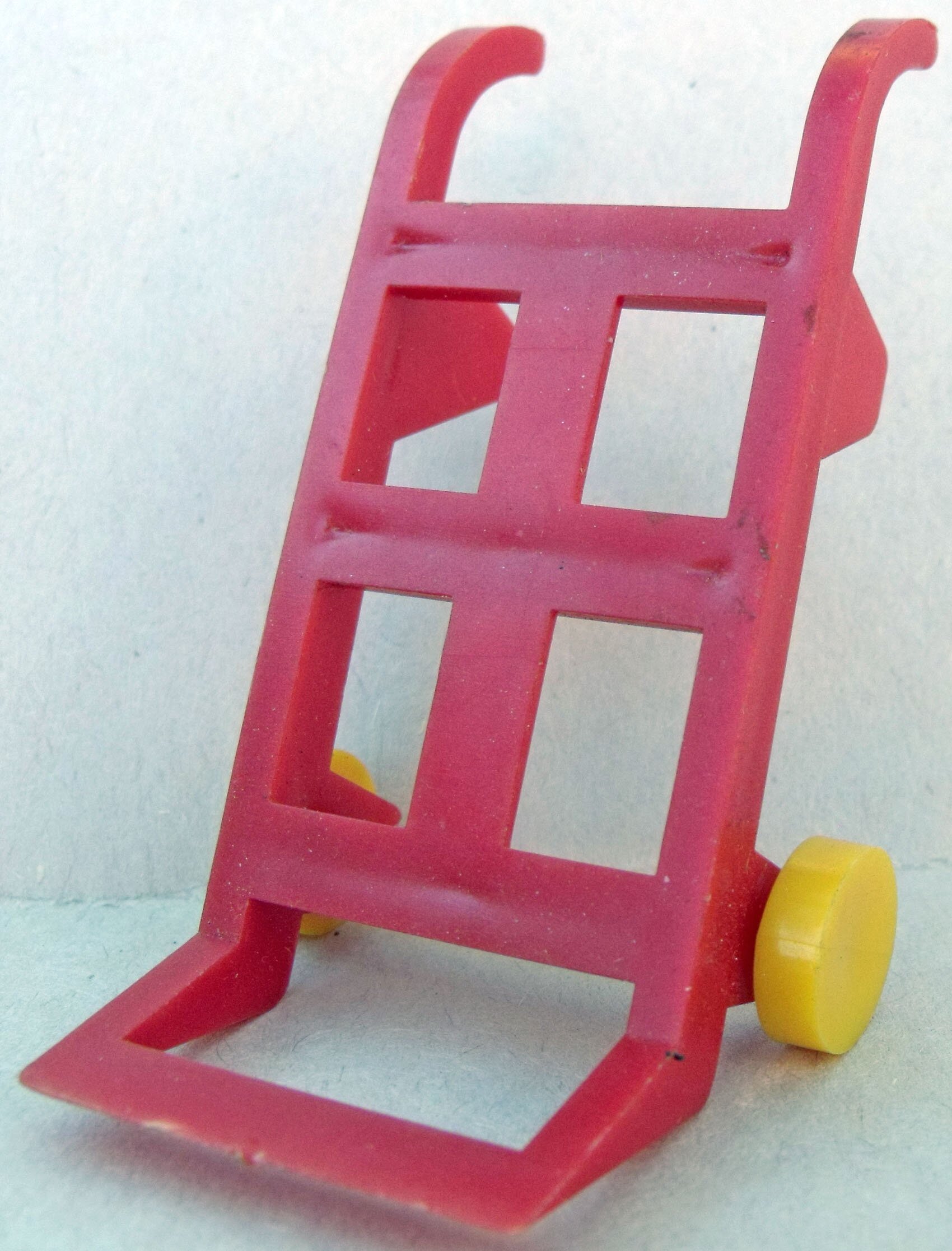 |
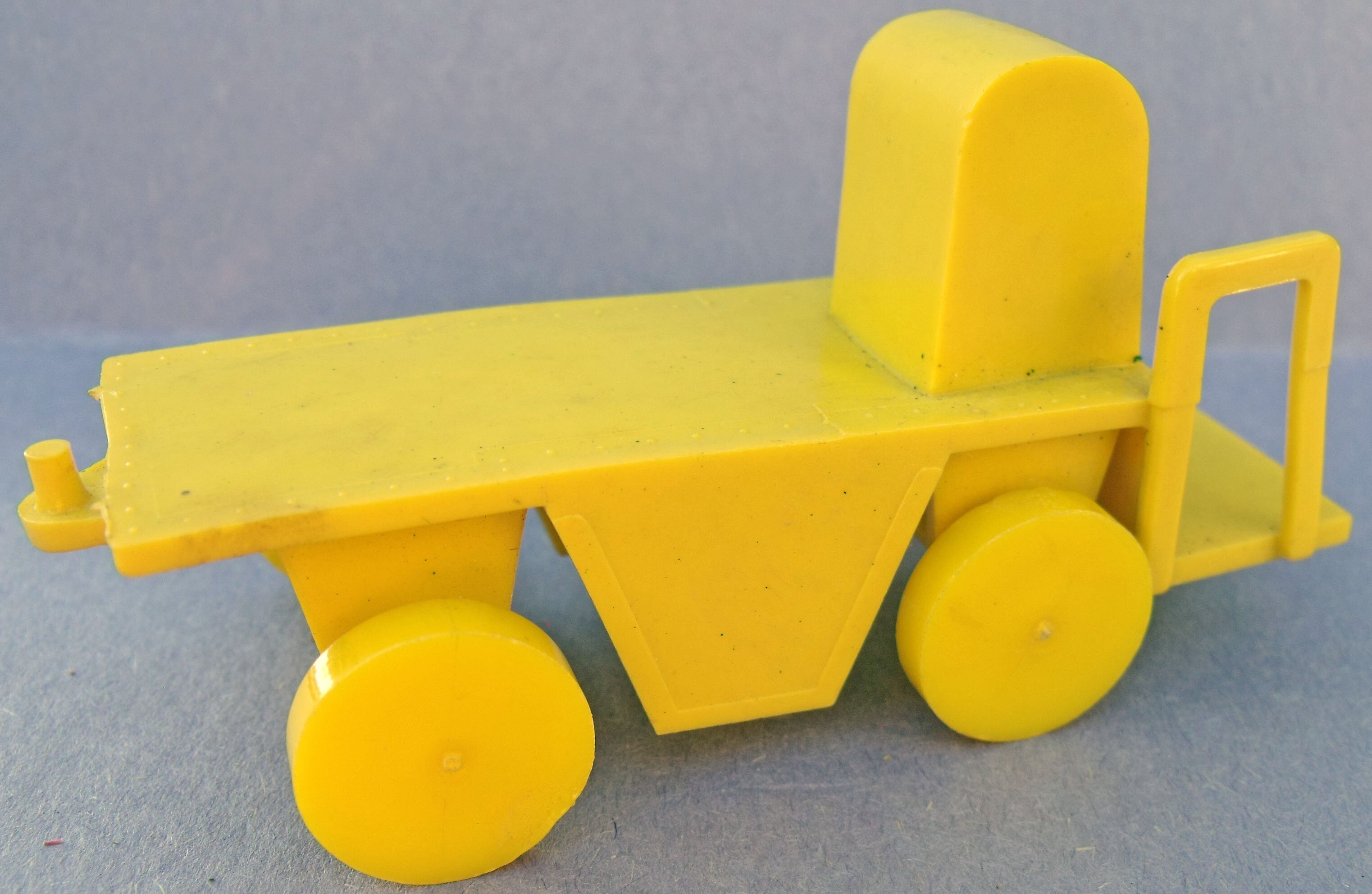 |
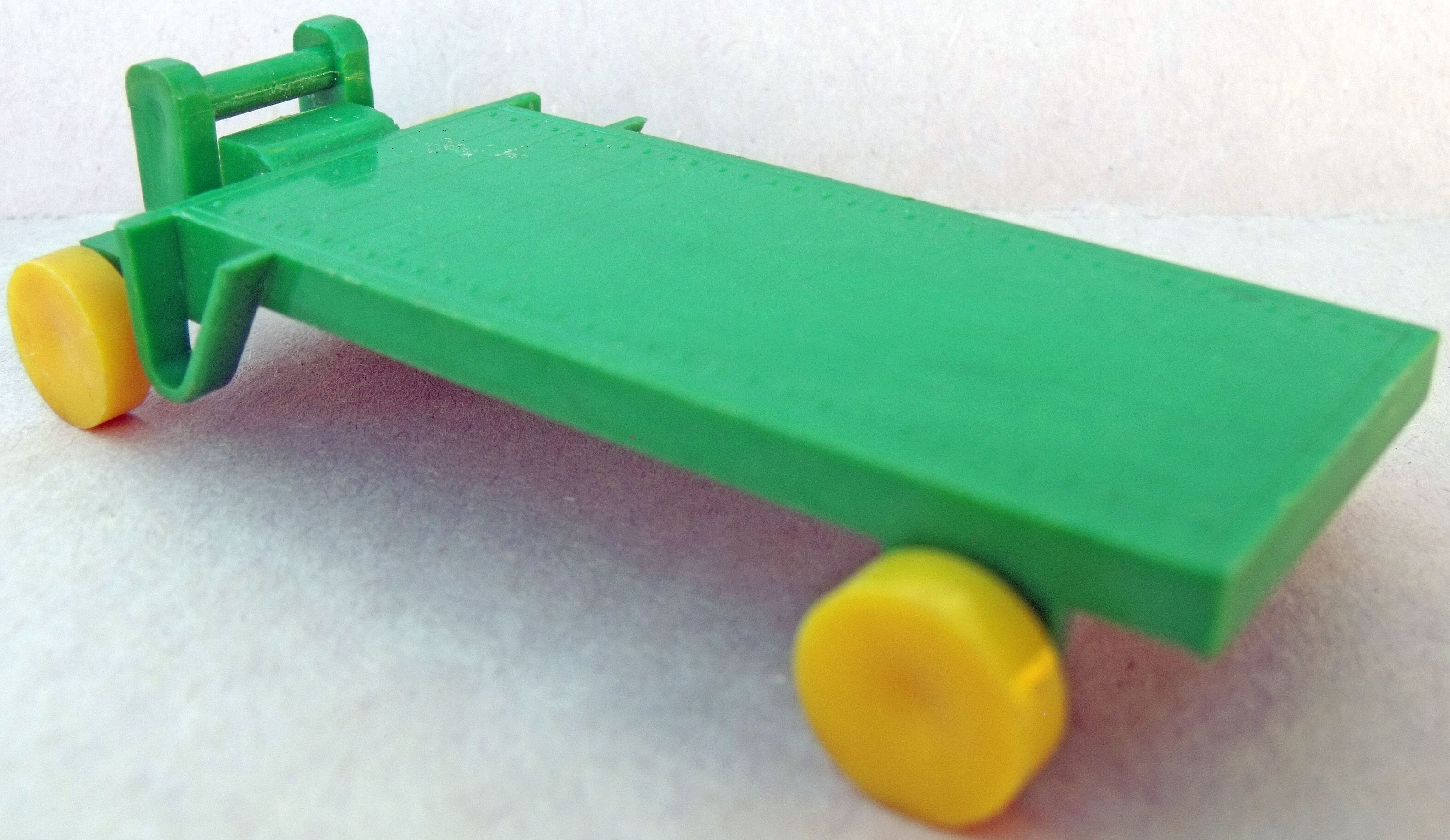 |
| 1. Hand cart | 2. Electric baggage truck | 3. Skid with separate handle (handle missing) |
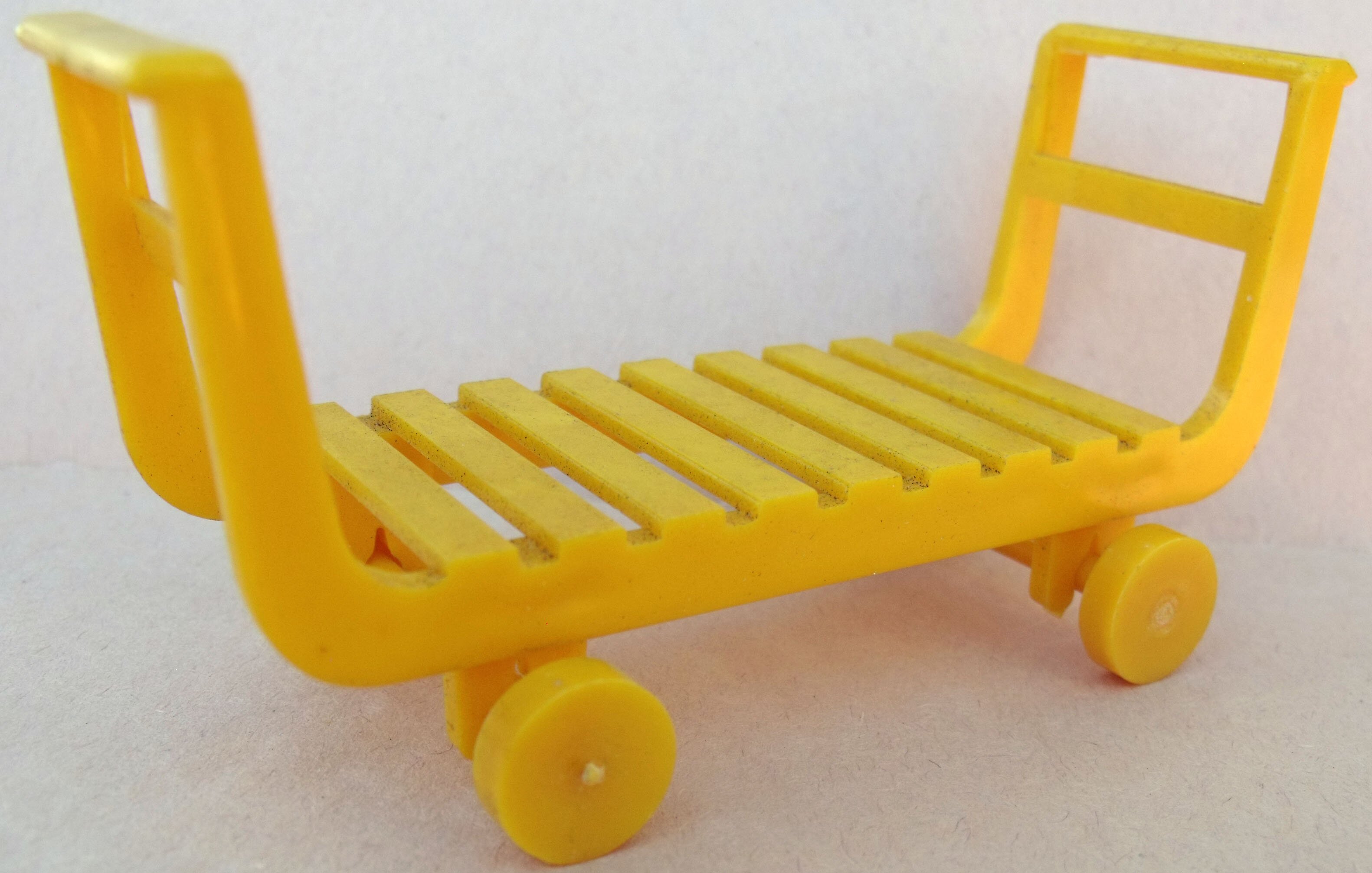 |
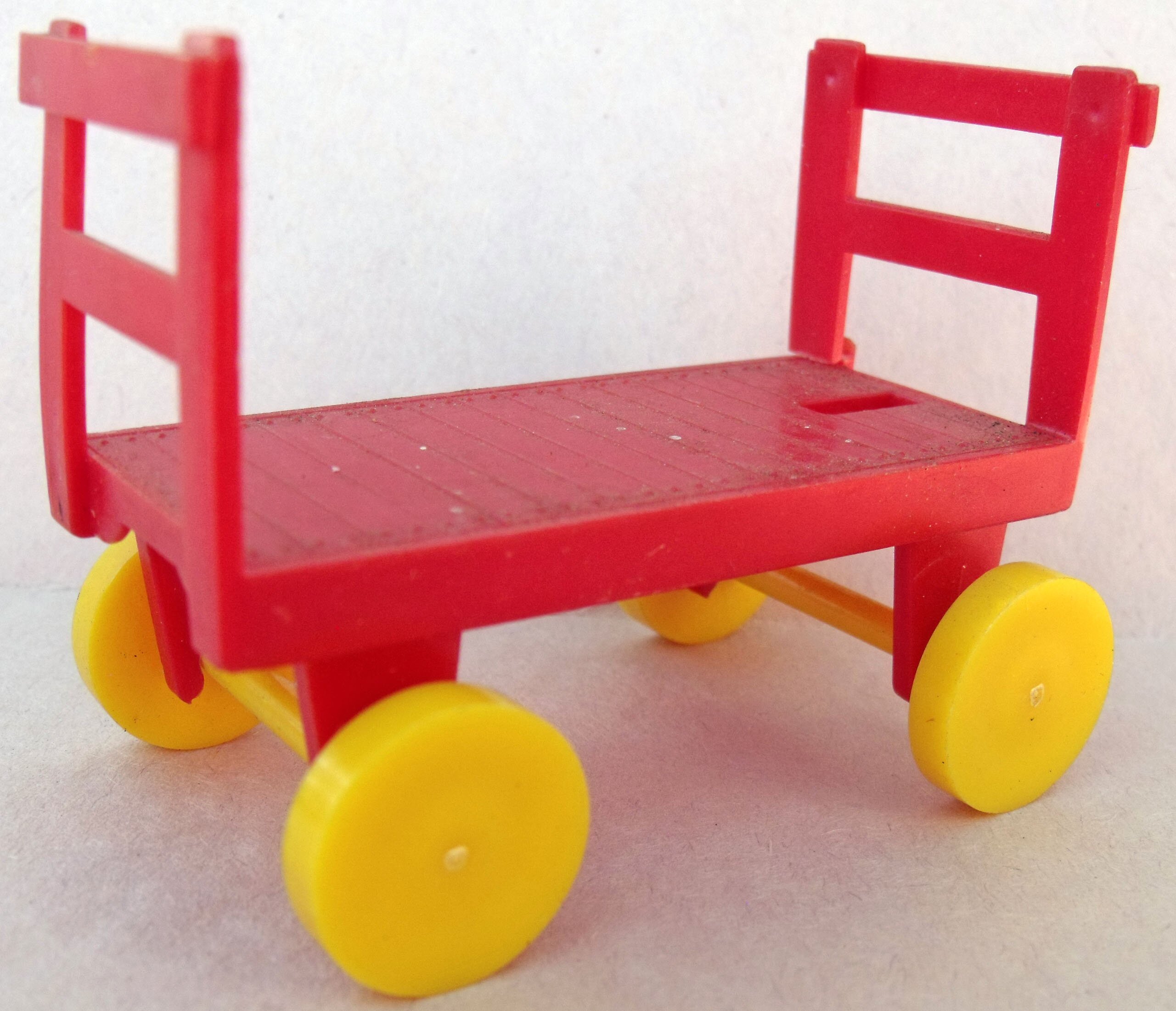 |
 |
| 4. Baggage truck with slat bottom | 5. Baggage truck with solid bottom and separate handle (handle missing) |
6. Scale Photo courtesy of Ebay ID divinelady388 |
Three of the other six hard plastic pieces were what the PFPC article refers to as "action" accessories. These were a suitcase, a steamer trunk, and a square crate, each with a removeable lid.. Opening and closing them is certainly an action, but because none of the three had a dimension of more than two inches, I doubt that many kids found much "action" in them. The final three items were an oil drum, a barrel, and a"non-operating" crate. The oil drum is the largest at 1-3/4 inches tall. They were produced in many shades of gray, varying from light to dark. Embarrassingly for me, I have had an unknown oil barrel sitting around the house for years and could not figure out where it came from until I wrote this page!
 |
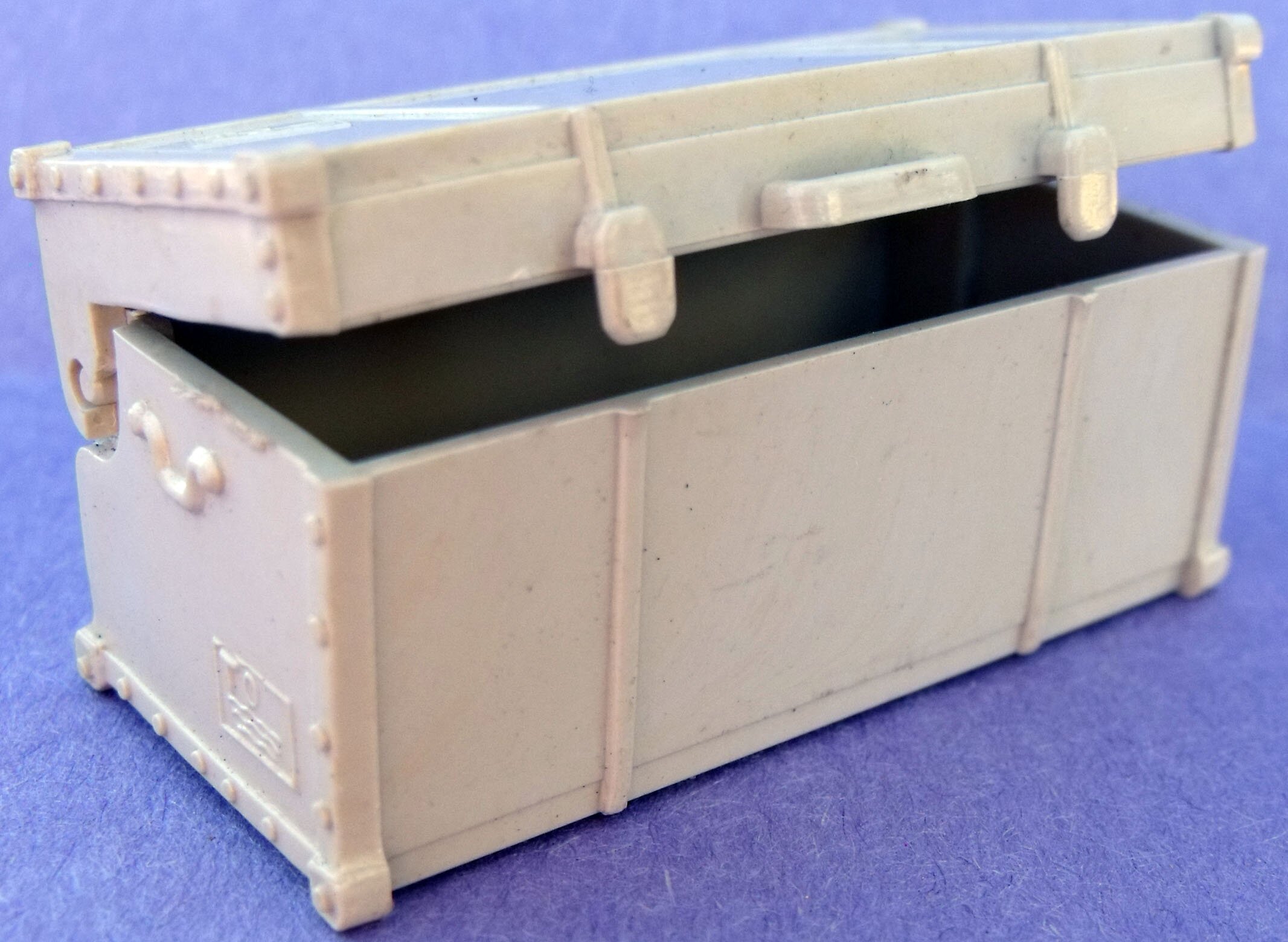 |
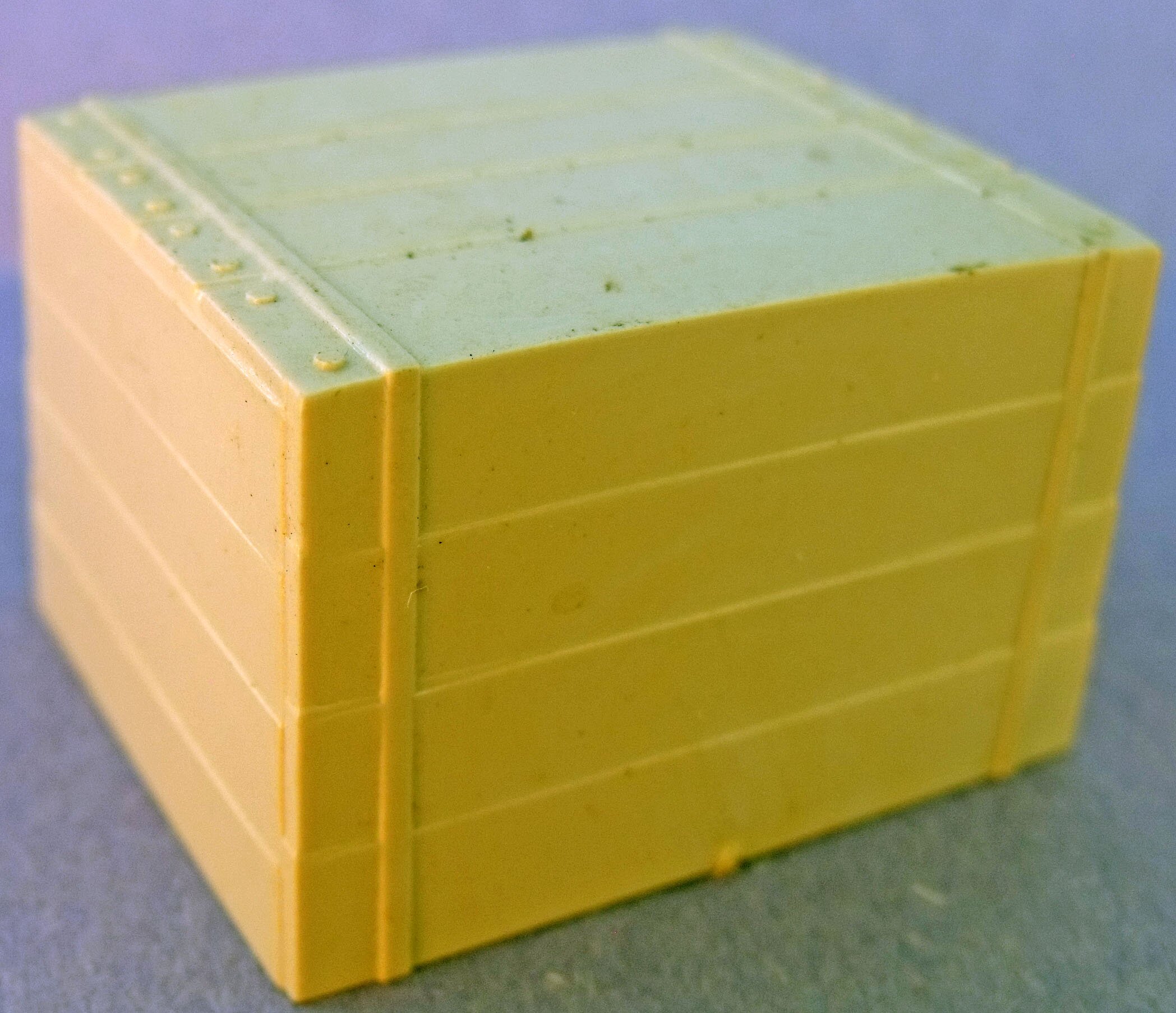 |
| 1. Suitcase | 2. Steamer trunk | 3. Square crate with lid (box shown bottom up, lid missing) |
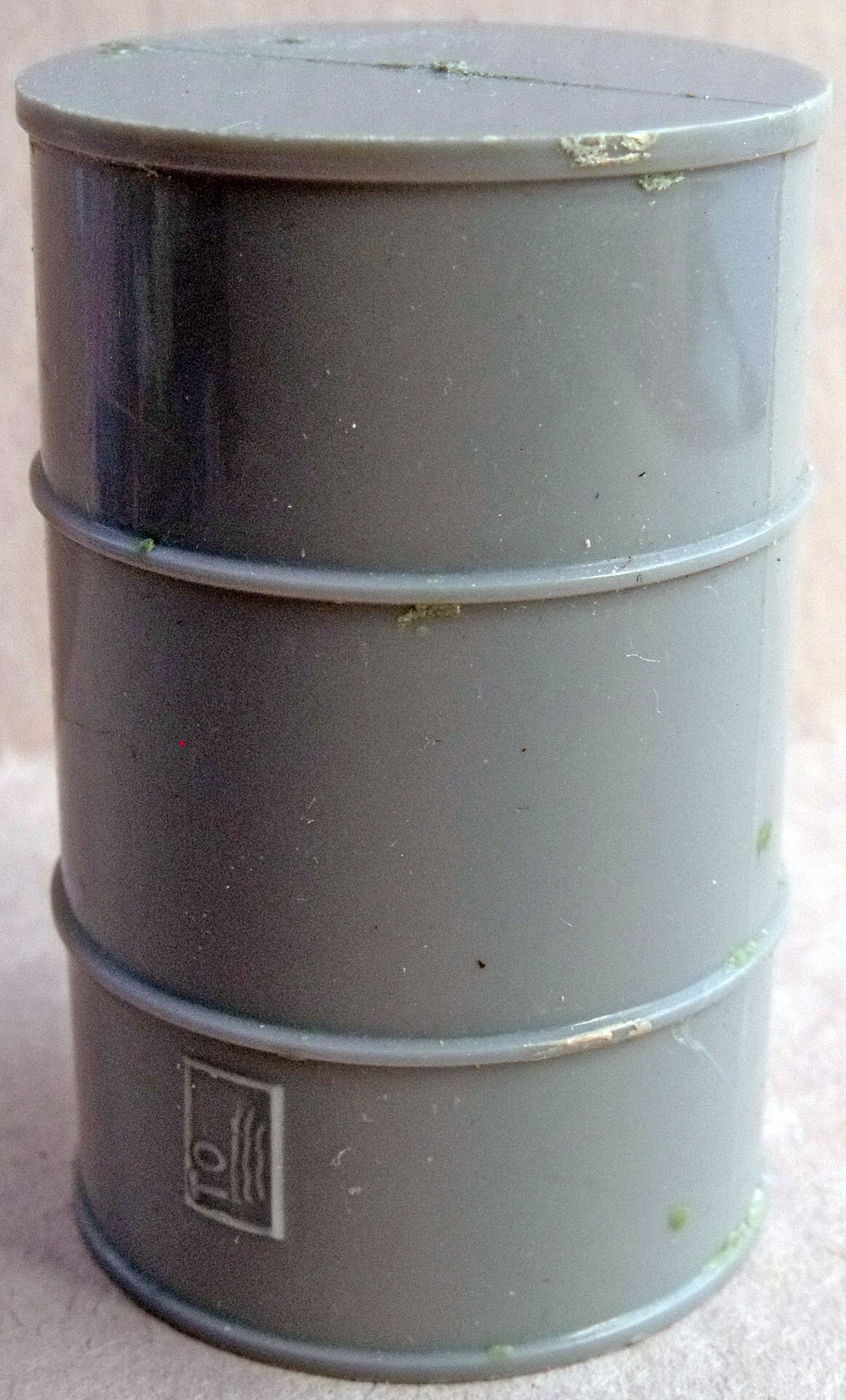 |
 |
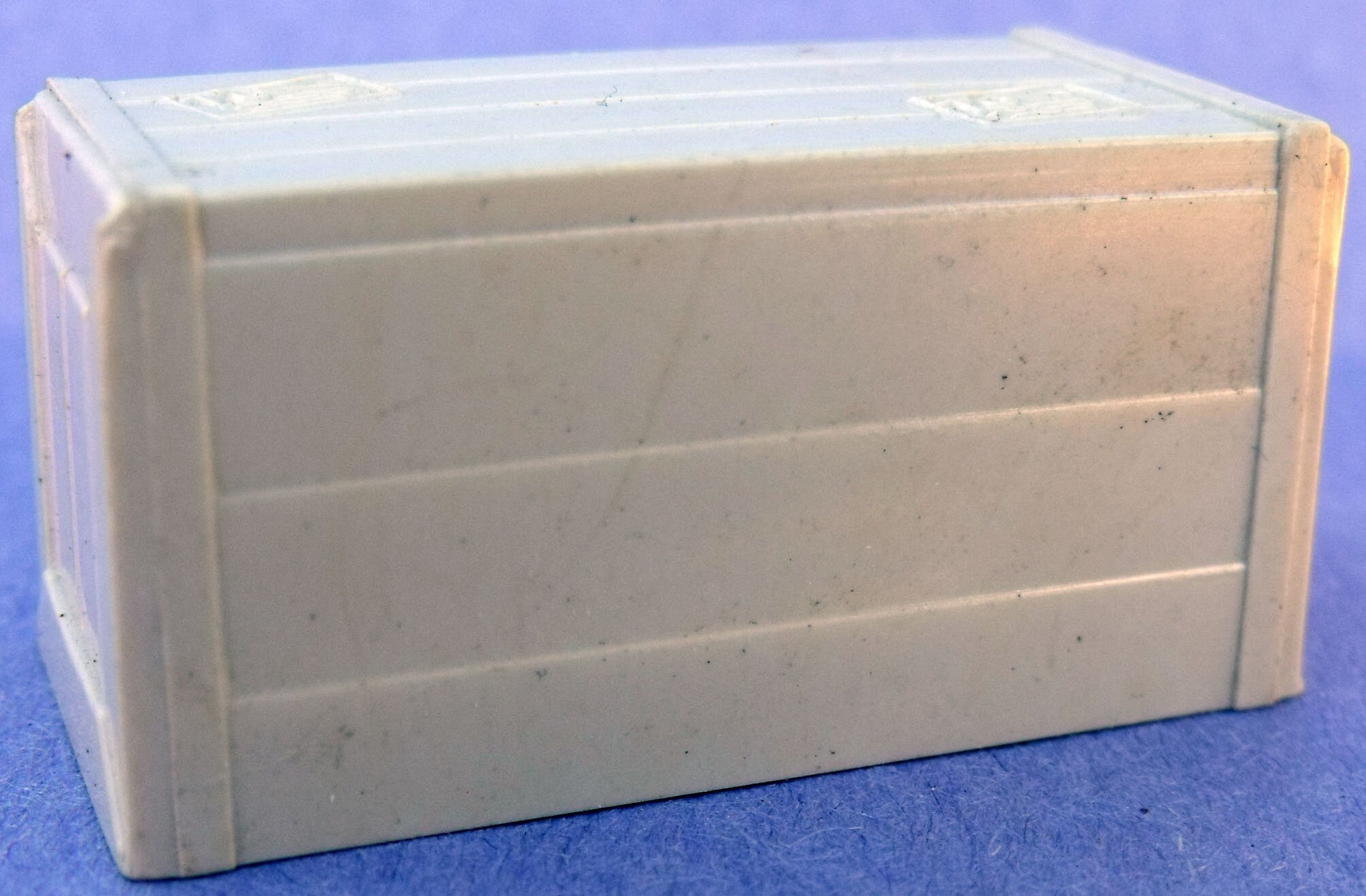 |
| 4. Oil drum | 5. Barrel Photo courtesy of Ebay ID divinelady388 |
6. Crate |
In addition to the hard plastic accessories, sets included crates and barrels made surprsingly of wood. These seem to be the same as those which Marx included with its Untouchables Play Set, which included a small warehouse. All are tiny, the crates 1-1/8 inch wide, and the barrels only 11/16 of an inch tall. Crates were left in natural wood with such labels as "Fragile" and "This side up." The barrels were painted red or yellow.
 |
| Examples of wooden crates and barrels Photo courtesy of Allan Ford, Ebay 610allanf |
In the set's biggest oddity, however, the company obtained actual product containers from various companies and included them as imaginary freight items. According to the article in PFPC, 28 such containers were included in each set! This certainly upped the advertised "piece count" for the set, a big selling point for playsets.
The article lists 17 different brands that are known to have been found in sets, such as toothpaste, chewing gum, candy, cereal, sugar, and others. I assume that some, if not all, were downsized boxes from the actual product box. In the two sets that the article was primarily based on 1) the 1953 set included boxes from SOS soap pads, Colgate toothpast, Wrigley's chewing gum, and Smith Bros. cough drops and 2) the 1954 had no such boxes included. The 1953 set included the original figures, and the 1954 set had the improved versions of figures and trucks (see vehicles below)...so perhaps these boxes were included only in the earliest sets.

Vehicles
Of course, a truck terminal doesn't have much action without trucks, and Marx included three styles of hard plastic trucks in its initial Trucking Terminal sets. These were the three shown below: a 6-3/4 inch pickup, a 6-inch truck with a "box bed", and a 6-1/2 inch stake truck. PFPC reports the trucks came in blue, green, red, yellow, and gray. Wheels and axles came in black or gray. The manner in which the PFPC article is written confuses me as to whether the wheels and axles were made in one piece combinations or as separate wheel and axles. It sounds to me as if both types exist, but I am not certain.
The article points out that it is these trucks that move the set out of the train set category, providing playability without a train.
 |
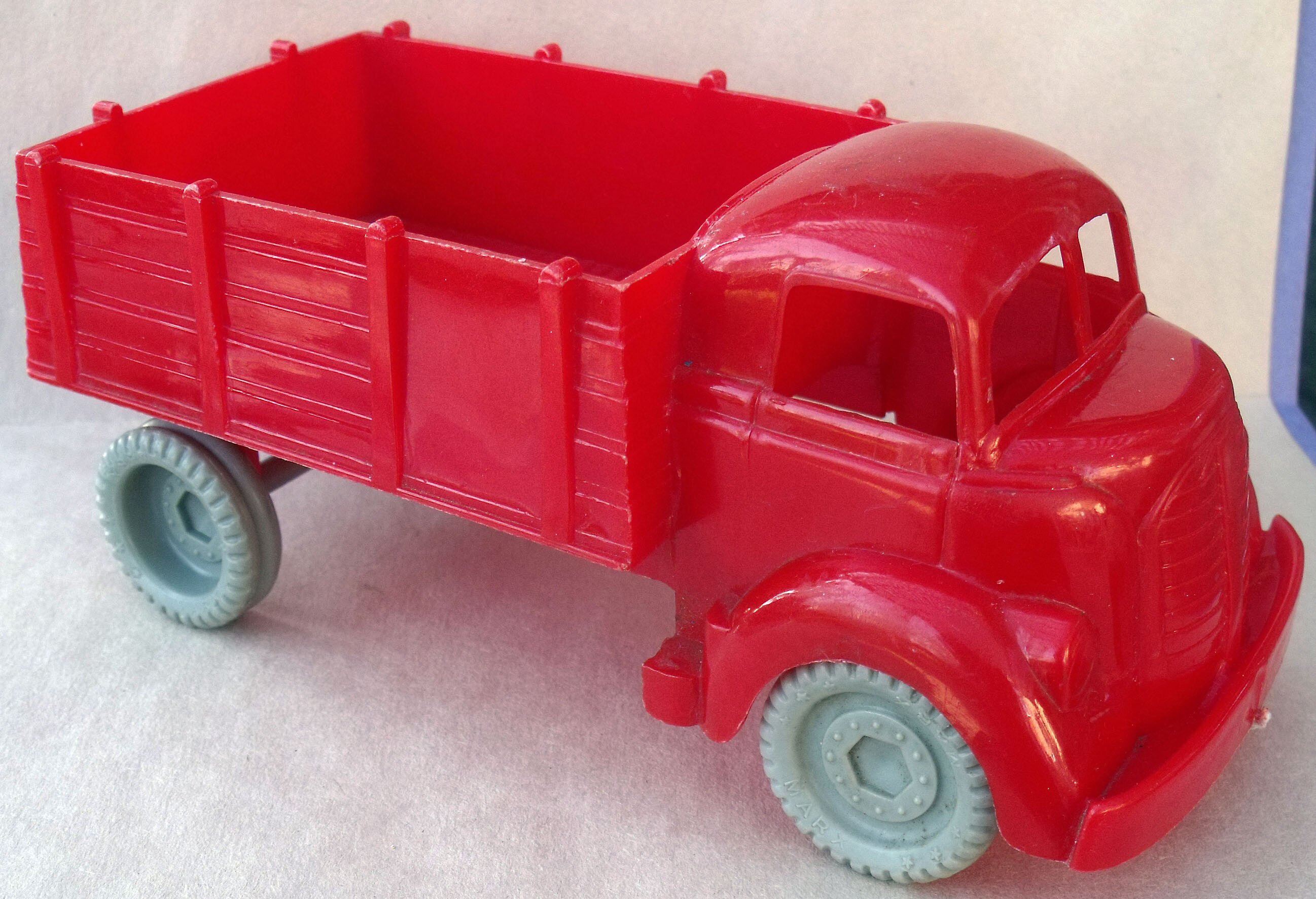 |
| Pickup truck |
Truck with box bed |
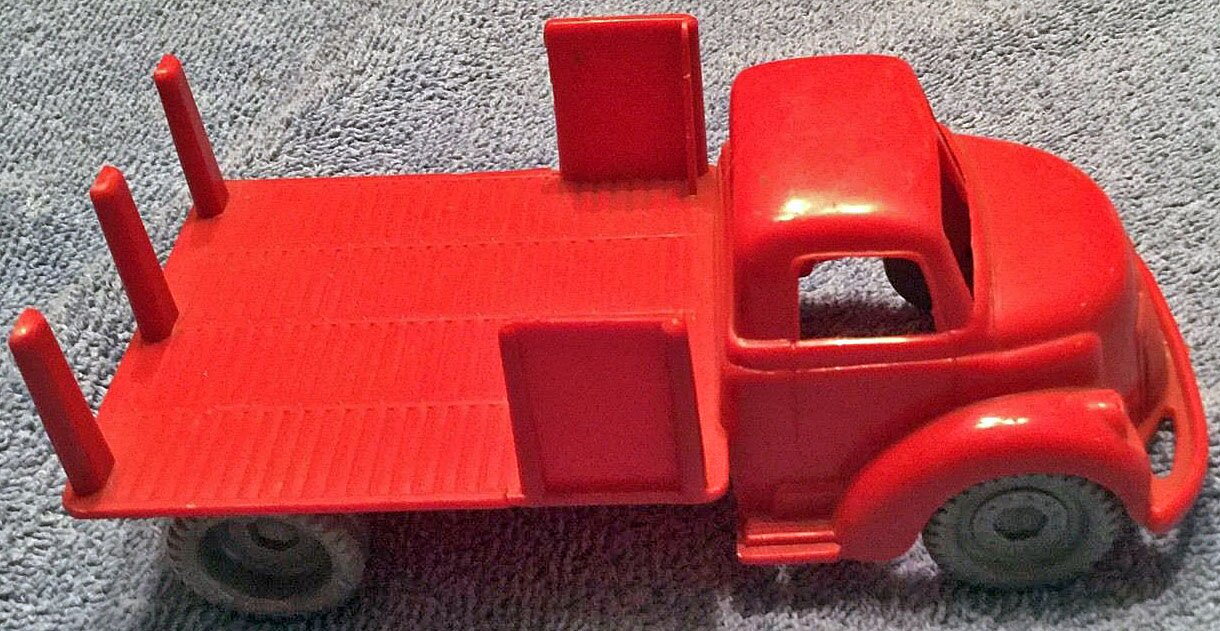 |
|
| Stake truck Photo courtesy of Ebay ID jimcdc130 |
When the company changed the freight terminal from a green to a maroon roof in 1954, they also replaced the three hard plastic trucks with three trucks made of the same tin litho as the terminal. These were friction-powered vehicles produced by the company's LineMar operations in Hong Kong, which made many such vehicles that were sold both individually and as part of playsets. They were a big improvement over the dime-store-like plastic vehicles, but probably due to their increased cost, fewer other accessories were in these later sets.
Each of these trucks came in its own individual, attractively-decorated cardboard box, because they also were sold separately. The three included a pickup truck and two semis with separate tractors and trailers. The pickup was about six inches long; the semis had 6-inch tractors and 8-1/2 inch trailers, so that when connected they were about a foot long. I don't recall ever seeing any of these trucks, but the PFPC article includes several photos of them. As with most Marx friction-powered vehicles, they appear to be very nicely designed and painted. The photos include semis labeled Pacific International Express, Allied Vane Lines, and North American Van Lines. However, LineMar produced a wide range of brand name trucks, so other companies may have been represented in some sets. The pickup door reads "Lazy Day Farms", a reference to some of Marx' farm playsets.
Sets with these trucks were produced in limited numbers, and the friction-powered trucks can be very expensive in today's market.
| Pickup truck | Semi tractor and trailer |
| Semi tractor and trailer |
In addition, according to the PFPC article, 1956 and 1957 Sears catalogs included a Trucking Terminal set that had a tin litho crane made by LineMar. However, it came only with a rather expensive Marx train set, so the article suggests that few of the sets were ever purchased. The crane also was sold separately with aquatic litho as a seaside dock crane. If you have one of these cranes, you could be richer than you think!
| Crane |